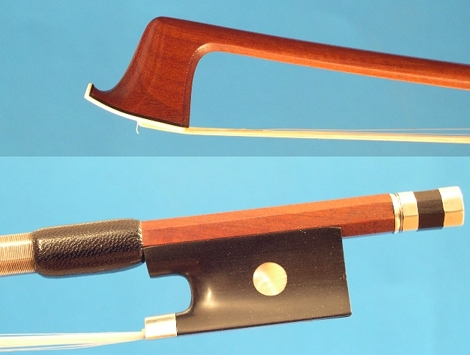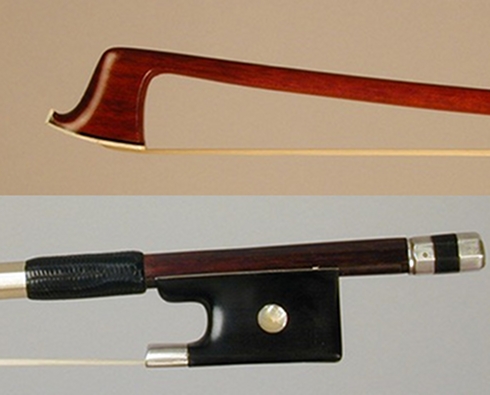AFTER 1860Surely some of you know Miles Davis' words: "Jazz died in 1960." Well, believe it or not, even with short resuscitations, watching the bowmaking history, one gets the idea that the bow is dead, obviously not in 1960, but exactly a century earlier!
Violin bow J.P.M. Persoit Of course, it is true that his statement, like mine, are a provocation, but not that much. The history of jazz has continued to offer excellent musicians even after the '60s, but with that sentence, I retain that Davis wanted to highlight the creative impasse and the lack of ideas that this kind of music has faced after those years. During his last twenty years of his life, he himself had left Jazz to move to other styles like Pop, just looking for new ways of expressions . In my opinion , the same fate has occurred to bowmaking ad well. After F.N. Voirin, the last real innovator, there has been a stalemate. Many excellent craftsmen built after 1860 : Lamy, Sartory, Ouchard, Martin, just to name a few, but there are many others. Nevertheless creativity has faded in favor of a strengthening in the school. Making bows had become a job like any other one and the workshops had turned into small factories, which, thanks to the "schooling" were able to produce a good average level, but no more sublime works of art. A beginning of standardization started years before. Even J.B. Vuillaume, although if he allowed a lot of freedom to the performer, required few stylistic lines as reference. Even the concept of stylistic was born in these years. The various Tourte, Persoit, Pajeot, Peccatte, being the precursors of the bow, created its shapes and were not forced to convey their creativity in a way, but they could give free rein to it. With Martin, a new bowmaking era begins ; more precisely that one of the factories. If at Pajeot's time, there was no concept of mass production, but as in his case, that one of an expanded laboratory. From the second half of the nineteenth century Bazin, Morizot, Ouchard started to appear and hired an average of 35 to 50 workers. In these laboratories the bows were produced in series , great to play with them , but were lacking character being totally impersonal. Who had manual skills and initiative, as Sartory and Fetique for example, after having spent fifteen years in a laboratory /school in Mirecourt , moved to seek fortune in the capital. But even if their works are excellent , they are in a way affected by the influence of the training they received. We have to consider that one of the best Sartory's teachers was Charles Peccatte. The one of his uncle Dominique has been Jean Pierre Marie Persoit, and Francois Xavier Tourte for the latter one. The next post, will be dedicated to J.J. Martin , a visionary craftsman, who tried even the most difficult enterprise in the craftsmanship world: the corporatism. We will begin to learn this new reality of bowmaking: who are the characters of this era and what impact that this change brought to the production chain.
Violin b ow J.J. Martin So long. Paolo
|
   |







